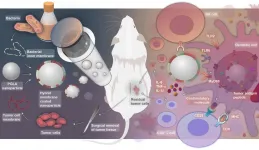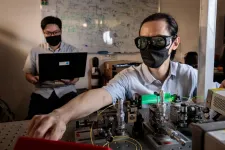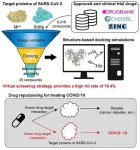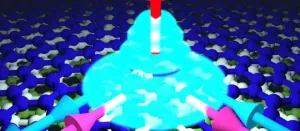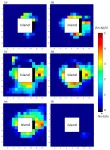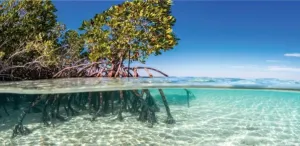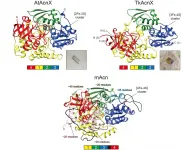An antioxidative stress regulator protects muscle tissue in space
Researchers from the University of Tsukuba find that a master regulator of the oxidative stress response affects muscle composition during space flight
2021-07-08
(Press-News.org) Ibaraki, Japan - Most kids dream of growing up to be astronauts; but the downside of spending extended amounts of time in low gravity is that astronauts' muscles tend to shrink and weaken through disuse. Now, researchers from Japan have identified a protein that affects how muscles respond to space flight.
In a study published in June 2021 in Communications Biology, researchers from the University of Tsukuba have revealed that nuclear factor E2-related factor 2, or NRF2, helps keep muscles from becoming weak in low gravity.
Muscle atrophy, or weakening, is a common feature of disease and aging. It can also occur after a long period of inactivity, such as during space flight, when astronauts don't need to use their muscles as much as they do on Earth to support their weight or move around. When muscles atrophy in space, they not only decrease in size, but they also tend to lose a type of fiber called "slow-twitch" and gain more fibers called "fast-twitch."
"This conversion from slow- to fast-twitch muscle fibers is closely associated with an increase in oxidative stress," explains Professor Satoru Takahashi, the senior author of the study. "Thus, we expected that removing factors that protect against oxidative stress would accelerate muscle atrophy under microgravity conditions."
To explore this, the researchers deleted the gene encoding NRF2, which helps controls the body's response to oxidative stress, in mice. The mice were then sent to live on the International Space Station for a month. When the mice returned, the researchers compared their calf muscles with those from mice who had spent the same month on Earth.
"We were surprised to find that the Nrf2-knockout mice did not lose any more muscle mass than the control mice under a microgravity environment," says Professor Takahashi. "However, they did show a significantly accelerated rate of slow-to-fast fiber type transition."
In addition to this change in muscle composition, there were also noticeable changes in the way that the muscle tissue used energy and nutrients. This shift in energy metabolism is a common feature of fiber type transition.
"Our findings suggest that NFR2 alters skeletal muscle composition during space flight by regulating oxidative and metabolic responses," states Professor Takahashi.
Given this newly discovered role for NFR2, finding treatments that target this protein could be useful for helping prevent muscle changes in astronauts during space flight. Targeting NFR2 could also be a promising avenue for addressing muscle wasting in diseases like cancer or during the aging process.
INFORMATION:
The article, "Nuclear factor E2-related factor 2 (NRF2) deficiency accelerates fast fibre type transition in soleus muscle during space flight," was published in Communications Biology at DOI: 10.1038/s42003-021-02334-4
This work was supported by a Grant-in-Aid for the Japan Aerospace Exploration
Agency (14YPTK-005512; S.T.), and a Grant-in-Aid for Scientific Research on Innovative Areas from MEXT (18H04965; S.T.). The authors declare no competing interests.
ELSE PRESS RELEASES FROM THIS DATE:
2021-07-08
Thanks to the rapid development of nanotechnology, a research team led by Profs. NIE Guangjun, WU Yan and ZHAO Yuliang from the National Center for Nanoscience and Technology (NCNST) of the Chinese Academy of Sciences (CAS) recently designed personalized tumor vaccines based on bacterial cytoplasmic membranes and cell membranes from resected tumor tissue. This work was published in Science Translational Medicine.
Cancer vaccines are an effective anti-tumor therapeutic option that utilize tumor antigens to stimulate patients' immune response and specifically kill tumor cells. Postoperative recurrence and metastasis after surgery can thus be effectively inhibited by the activated immune system. Therefore, ...
2021-07-08
Quantum key distribution (QKD) is a method for secure communication that uses quantum mechanics to encrypt information. While the security of QKD is unbreakable in principle, if it is incorrectly implemented, vital information could still be stolen by attackers. These are known as side-channel attacks, where the attackers exploit weaknesses in the setup of the information system to eavesdrop on the exchange of secret keys.
Researchers from the National University of Singapore (NUS) have developed two methods, one theoretical and one experimental, to ensure that QKD communications cannot be attacked in this way. The first is an ultra-secure cryptography protocol that can be deployed in any communication network that needs long-term ...
2021-07-08
Researchers at the National Human Genome Research Institute (NHGRI), part of the National Institutes of Health (NIH), have developed the Families Sharing Health Assessment and Risk Evaluation (SHARE) workbook, which helps people use their family history to assess their risk for heart disease, diabetes, breast cancer and colorectal cancer.
Since 2012, Laura Koehly, Ph.D., and her research team have measured the accessibility and usability of the workbook by working with communities and continually updating the workbook to address issues. Koehly is the chief of the Social ...
2021-07-08
A joint research group from KAIST and Institut Pasteur Korea has identified repurposed drugs for COVID-19 treatment through virtual screening and cell-based assays. The research team suggested the strategy for virtual screening with greatly reduced false positives by incorporating pre-docking filtering based on shape similarity and post-docking filtering based on interaction similarity. This strategy will help develop therapeutic medications for COVID-19 and other antiviral diseases more rapidly. This study was reported at the Proceedings of the National Academy of Sciences of ...
2021-07-08
Washington, DC (July 6, 2021) --The International Whaling Commission (IWC) was founded to regulate whaling. Today, it also increasingly focuses on the value of live whales for planetary health. A new workshop report confirms the great ecological value of whales to help mitigate climate change, transport nutrients, enhance marine productivity, and promote biodiversity in marine ecosystems.
The world's leading experts gathered for a three-day workshop in April that was co-hosted by the IWC and the Convention on the Conservation of Migratory Species of Wild Animals (CMS). The meeting came in response to a 2016 IWC resolution, introduced by the government of Chile, to compile scientific information about the ecological roles of cetaceans (whales and dolphins).
The workshop discussions ...
2021-07-08
Researchers at the National Cerebral and Cardiovascular Center in Japan show that excessive blood pressure reduction for acute intracerebral hemorrhage is risky in people with decreased kidney function
Suita, Japan -- Stroke and chronic kidney disease are both difficult to handle in their own rights, but having a stroke when your kidneys are already poor is more than just double the trouble. A new study led by Kazunori Toyoda at the National Cerebral and Cardiovascular Center (NCVC) in Japan shows that excessive blood pressure reduction for acute intracerebral hemorrhage can have dire consequences when kidney function is low. The study was published in the scientific journal Neurology®.
Intracerebral hemorrhage is a disease for which effective treatment is expected ...
2021-07-08
Rare-earth compounds have fascinated researchers for decades due to the unique quantum properties they display, which have so far remained totally out of reach of everyday compounds. One of the most remarkable and exotic properties of those materials is the emergence of exotic superconducting states, and particularly the superconducting states required to build future topological quantum computers. While these specific rare-earth compounds, known as heavy fermion superconductors, have been known for decades, making usable quantum technologies out of them has remained a critically ...
2021-07-08
A new study suggests sea discoloration data obtained from satellite images as a novel criterion in predicting if eruption looms for an underwater volcano.
There have been frequent eruptions of submarine volcanoes in recent years. The past two years alone recorded the explosions of Anak Krakatau in Indonesia, White Island in New Zealand, and Nishinoshima Island in Japan. Observing signs of volcanic unrest is crucial in providing life-saving information and ensuring that air and maritime travel are safe in the area.
Although predicting when a volcano will erupt can be difficult as each behaves differently, scientists are on the lookout for these telltale signs: heightened seismic activity, expansion of magma pools, increases in volcanic gas release, ...
2021-07-08
A pioneering cultivation strategy that recreates a mangrove environment in the lab has enabled identification of novel bacteria residing in Red Sea mangroves and will help improve understanding of mangrove ecosystem stability, resilience and sustainability.
Mangroves are highly productive, dominant coastal ecosystems that line between 60-70 percent of the world's tropical and subtropical coastlines. They harbor diverse microbial communities thought to make up 80 percent of the ecosystem's biomass. Many of the microbial species, families and taxa are unknown to science.
The cultivation strategy was developed by a team of KAUST researchers, including Fatmah Sefrji and Ramona Marasco.
"Red Sea mangroves are particularly interesting because they represent an extreme and unique ...
2021-07-08
The aconitase superfamily currently contains four functional enzymes including the archetypical aconitase (referred to as "other aconitase enzymes"), and one hypothetical aconitase X (AcnX). The aconitase enzymes catalyze the homologous stereospecific isomerization, and their three-dimensional structures and catalytic mechanisms including the [4Fe-4S] iron-sulfur cluster are very similar each other (Fig. 1a). Therefore, the aconitase superfamily (enzymes) is a typical example that is suitable for the so-called "recruitment hypothesis of enzyme evolution"; the gene duplication of multi-specific enzymes, followed by the narrowing of substrate specificity (ref. 1).
AcnX (subfamily) is further classified into "AcnXType-I" consisting of a single ...
LAST 30 PRESS RELEASES:
[Press-News.org] An antioxidative stress regulator protects muscle tissue in space
Researchers from the University of Tsukuba find that a master regulator of the oxidative stress response affects muscle composition during space flight
